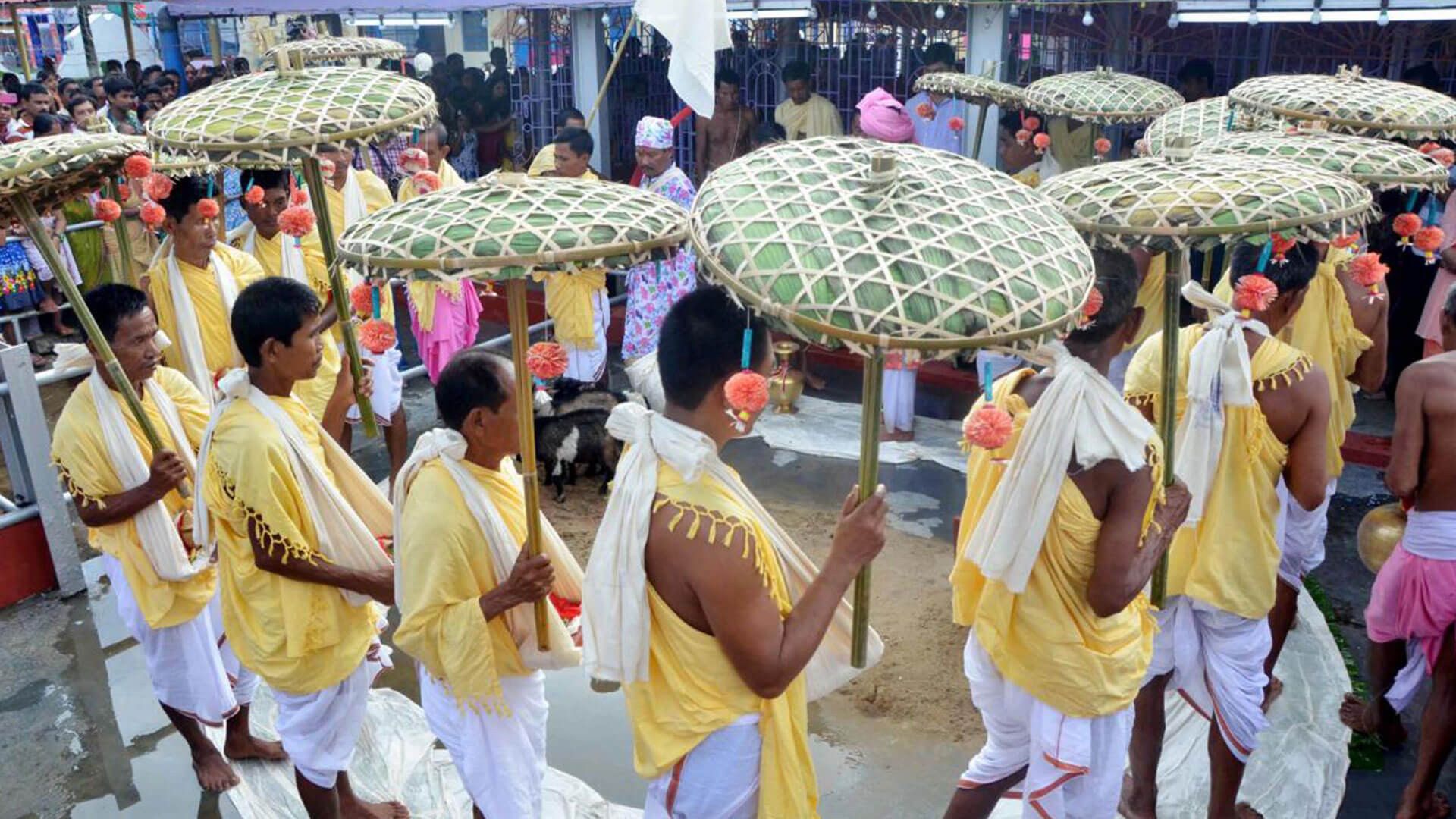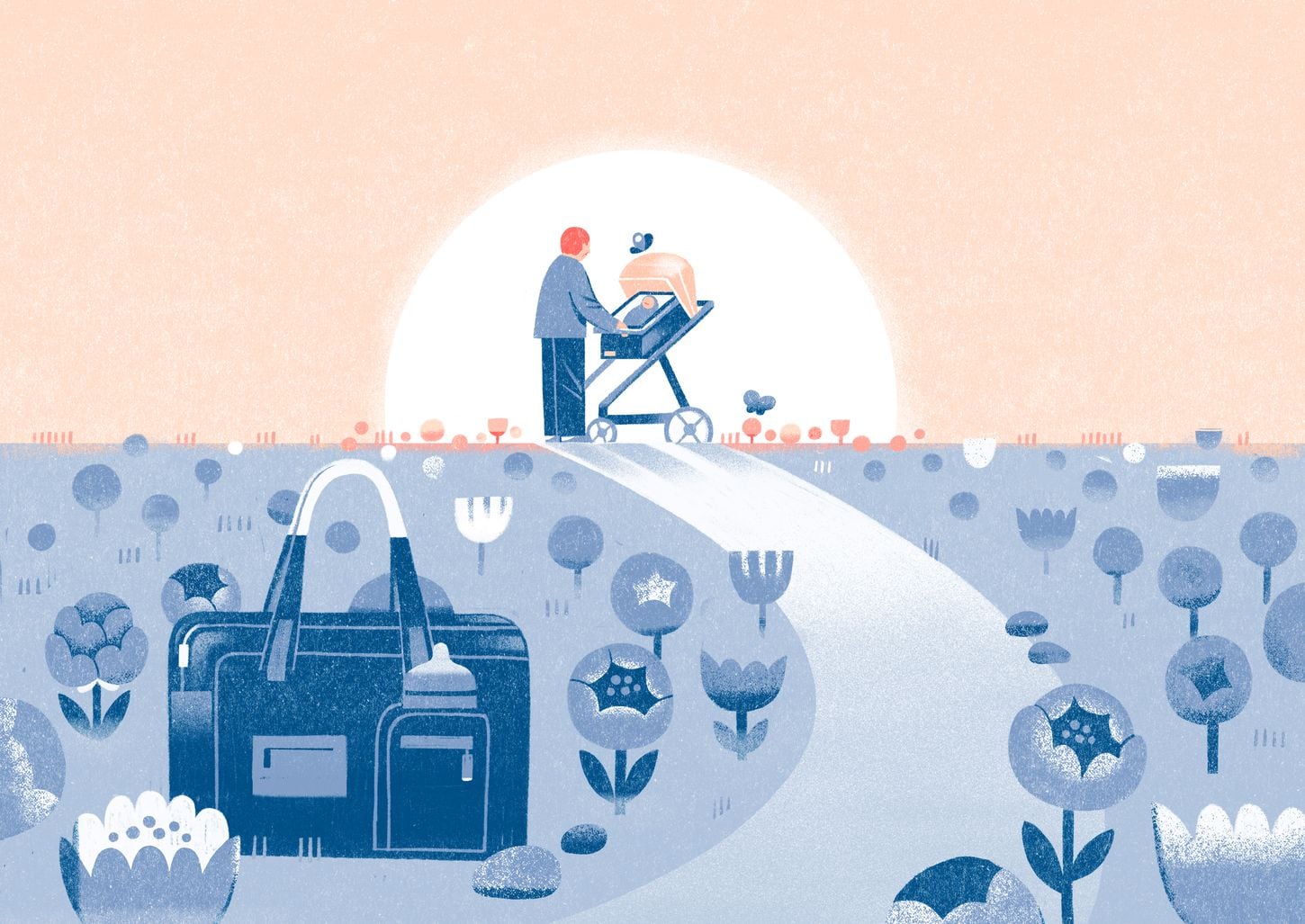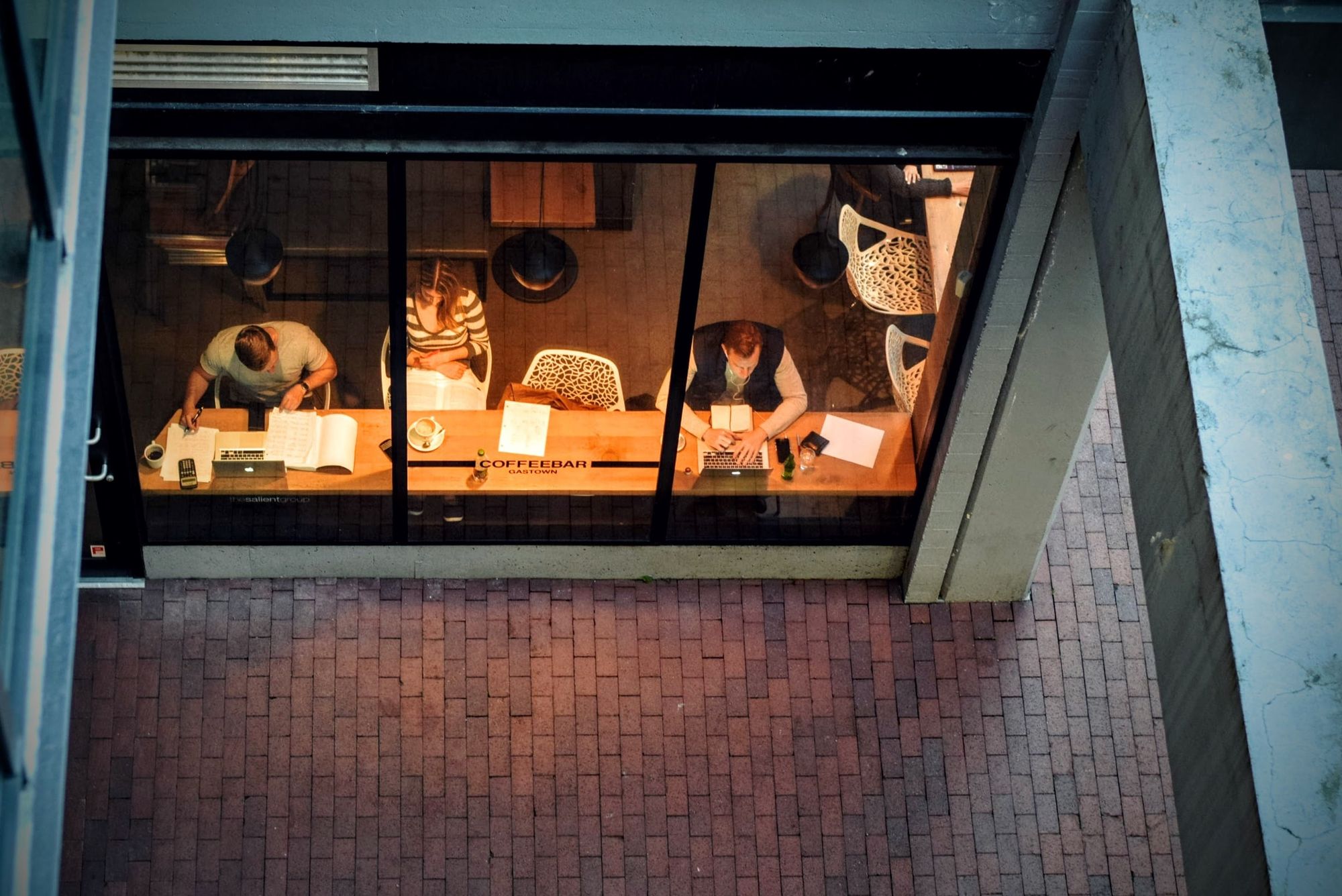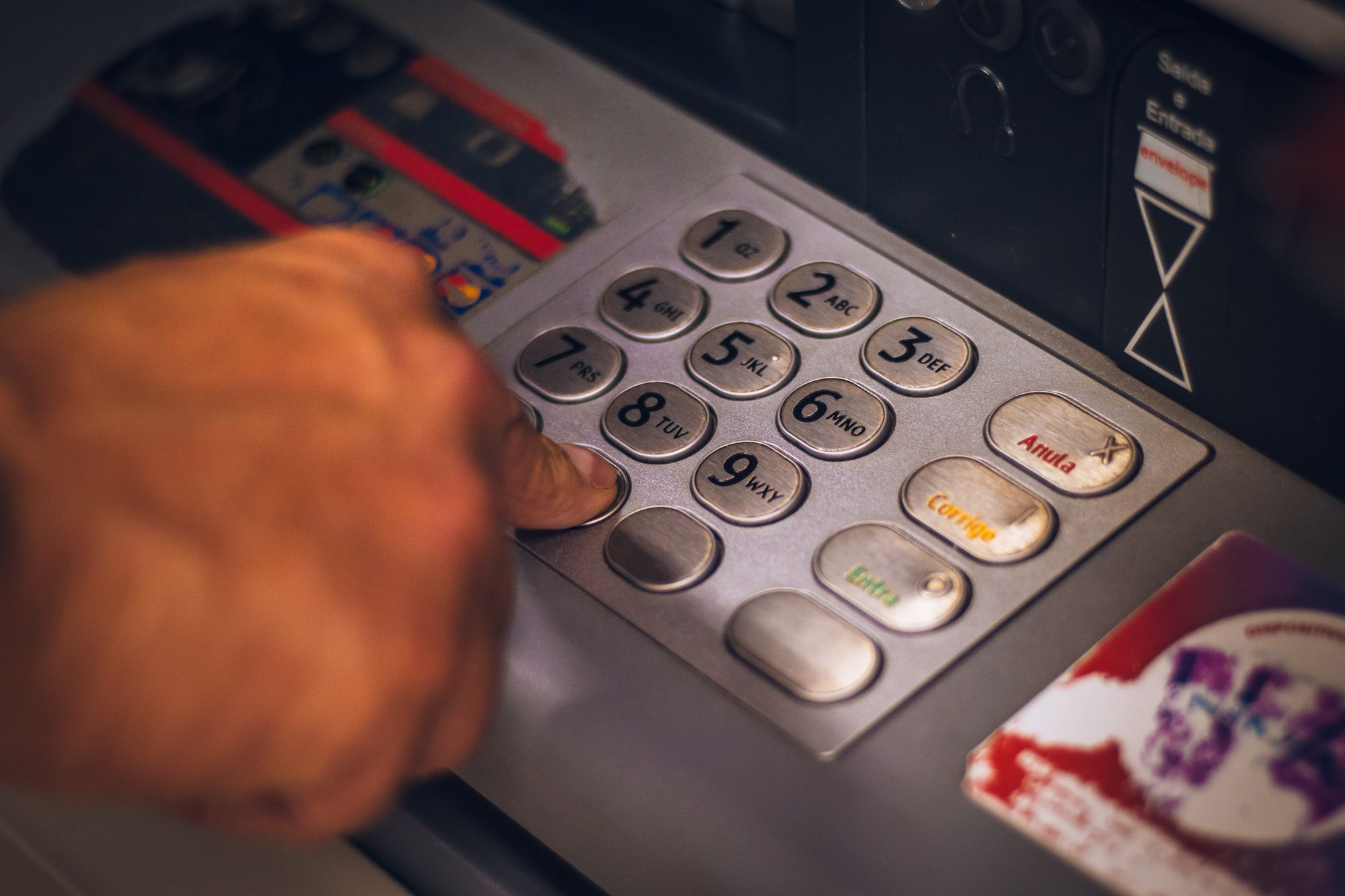Are you an employer or an employee based in Tripura? Are you excited to plan your family trips or your activities on your day-offs? Or are you looking forward to those breaths of relaxation and rejuvenation, where you can manage your workplace stress, keep up with your motivation, and thus, ensure better efficiency and therefore increased net profit ratio, gross profit, and improved customer retention with healthier financial statements, financial KPIs, and business metrics all over.

The other benefits of knowing Tripura’s holiday calendar for 2022 also involve how you would be able to pre-plan your work schedule or calendar accordingly, as well as how the marketing team of the company would be able to take advantage of the increase in market demand and the ongoing market trends to increase the sales, and therefore the revenue of the business.
They would be able to plan this out properly through a marketing planner, covering different types of marketing like digital marketing, social media marketing, sustainable marketing, performance marketing, content marketing, and many more.
If for these reasons or other reasons, you are looking forward to knowing the holidays that the Tripura government will give in 2022, then this article is the perfect place for you. Here, we will be discussing the national as well as regional holidays, as well as the significance of the holidays, and the most popular ways in which those holidays or rather festivals are celebrated.
Thus, the topics that will be covered in this article are:
- About Tripura
- List of Holidays in Tripura for 2022
- How Can Deskera Help You?
- Key Takeaways
- Related Articles
About Tripura
Tripura is the third smallest state in the country and is bordered by Bangladesh on its north, south, and west sides. The east side of the state shares a border with Mizoram, whereas the northeast side of the state shares a border with Assam. This hilly state in northeast India is a home to a diverse mix of religious groups and tribal cultures.
Almost half of the state’s population belongs to the Scheduled Caste and Scheduled Tribe. In fact, the Tripuri constitute more than half the tribal community. The other prominent tribal groups based in this state include the Chakma, the Reang, the Halam (a subgroup of Kuki), the Lusai (Mizo), the Garo, and the Marma (Mogh). These tribal groups moved to Tripura from the hill regions in the neighboring states.
The official language of the state is Bengali (Bangla) - an Indo-Aryan language that is spoken by more than half of the population, and Kokborok (Tripuri) - a Tibeto-Burman language. Another widely spoken language is Manipuri - another Tibeto-Burman language.
The religion of the majority of the people in Tripura is Hinduism. Muslims constitute the largest minority but account for less than one-tenth of the population. Additionally, there are also small minorities of Christians, particularly among the tribal people. Lastly, most of the Chakma and Mogh are Buddhists.
Thus, most of the population of Tripura, adhering to Hinduism and speaking Bengali, shares in the broader cultural traditions of India. However, the Muslim minority in Tripura has its cultural tradition sharing with those in Bangladesh. Other important elements of Tripura’s cultural life are the traditions of the tribal people, with each community possessing its own festivals, folklore, dance, and music.
The two of the largest festivals of Tripura are the Kharchi Puja and the Garia. Kharchi Puja is also known as the Festival of the 14 Gods and has its origins in the tribal tradition. However, it is now a major temple festival celebrated within a predominantly Hindu framework by both- tribal and nontribal people. Kharchi Puja takes place in Agartala (capital of Tripura) every July and honors the deities and the Earth.
On the other hand, Garia celebration is a prominent festival of the indigenous population and is associated particularly with the Tripuri people. This celebration is held in April each year, after the planting of the fields, to pray for a successful agricultural year.
Therefore, in Tripura, the mainstream Indian cultural elements coexist with the traditional practices of the ethnic groups. This includes various dances to celebrate religious occasions, weddings and festivities, the use of locally crafted musical instruments and clothes, and the worship of regional deities. In fact, the sculptures at the archaeological sites Pilak, Devtamura, and Unakoti provide historical evidence of artistic fusion between the organized and indigenous religions.
Tripura has a wide collection of notable art and cultural displays, which includes:
- Mamita Dance- It is a Tripuri dance form that is performed during the Mamita occasion. This is after harvesting of the year's first crops, and it involves worshiping Ama Mailuma.
- Goria Dance- This is a Tripuri dance form that is performed during the Goria puja.
- Hojagiri Dance- This is a divine Tripuri dance form. This dance is performed on the occasion of Hojagiri festivals, or Laxmi Puja, held on the following full moon night of Durga Puja, which is generally after the third day of Dussehra. On this day, Goddess Mailuma (Tipra Indigenous Goddess) is worshiped.
- Lebang Dance- This is also a Tripuri dance form.
- Mosak Sulmani Dance- This is also a Tripuri dance form.
- Jadu Kolija- This is a Tripuri folk-classical song.
- Dangsa Mwsamung- This is a type of Tripuri play that is performed on the stage.
- There are other dance forms of the minority groups, which includes Sangrai dance and Owa dance of Mog, Wangla dance of Garo, Hai-hak dance of Halam, and Bizhu dance of Chakma.
- Sarinda- It is a local musical string instrument.
- Chongpreng- It is also a local musical string instrument.
- Sumui- It is a Tripuri flute.
- Along with such traditional music (as discussed above), mainstream Indian musical elements such as Indian classical music and dance are also practiced.
List of Holidays in Tripura for 2022
The list of holidays in Tripura for 2022 is as follows:
Netaji Subhash Chandra Bose’s Birthday (23rd January 2022)
Also known as Netaji Jayanti, and officially as Parakram Diwas or Parakram Divas (i.e., Day of Valour), this is a national event that is celebrated annually to mark the birthday of the prominent Indian freedom fighter- Netaji Subhash Chandra Bose.
Netaji Subhash Chandra Bose had played a pivotal role in the Indian Independence Movement and was the head of the Indian National Army (Azad Hind Fouj) and also the founder-head of the Azad Hind Government. Netaji Jayanti was observed as Parakram Diwas for the first time in 2021 on his 124th birth anniversary.
On this day, flag hoisting is one of the most common practices observed. His statues are garlanded, and special cultural programs are organized in schools and colleges. This involves the singing and humming of patriotic songs and anthems by the choirs and orchestra groups. Additionally, some of the places that are most visited by people on his birthday are:
- Netaji Museum in Giddapahar, Kurseong
- Netaji Bhawan, Kolkata
- INA Museum, Morang
- Swatantra Sainani Museum, RedFort Complex, Delhi
This is a regional holiday that is also mentioned in the Assam holiday calendar for 2022, the West Bengal holiday calendar for 2022, and the Jharkhand holiday calendar for 2022.
Republic Day (26th January 2022)
Republic Day is a national holiday that is celebrated throughout the country to mark and celebrate the date on which the Constitution of India came into force on 26th January 1950. It was by this constitution that the Government of India Act 1935 was replaced to become the governing document of India, thereby turning India into a newly formed republic.
Additionally, this day also marked the transition of India from an autonomous Commonwealth realm with the British Monarch as the nominal head of the Indian Dominion to a fully sovereign republic in the Commonwealth of Nations. The President of India now became the nominal head of the Indian Union.
In Tripura, this celebration involves the hoisting of the national flag in all the government and private buildings. It also involves laying a wreath at Gandhi Bedi at Gandhighat and paying homage at the Albert Ekka Park, Lichubagan, by laying a wreath at the Shaheed Bedi.
Additionally, the key event gets organized at the Assam Rifles Maidan in Agartala. Here, the Governor of the state hoists the national flag, greets the parade, and presents prizes and medals to officials of various fields. There is also a short cultural program to celebrate this occasion further.
Often, fruits and sweets are distributed among the patients of different hospitals, orphanages, and distressed residents of Agartala, and the residents of Central Correctional Institution. Thus, in Tripura, Republic Day is celebrated through various programs, activities, and charities with immense euphoria and merriment.
Saraswati Puja (5th February 2022)
Also known as Vasant Panchami, this festival is celebrated in honor of the Hindu Goddess Saraswati. This festival marks the preparation for the arrival of spring. Vasant Panchami also marks the start of preparations for Holika and Holi, which takes place forty days later. This festival is celebrated forty days before spring because any season’s transition period is forty days, after which it comes into full bloom.
Saraswati is the Goddess of knowledge, language, music, and all arts. She symbolizes creative energy and power in all its forms, including longing and love. The season and this festival also celebrates the agricultural fields’ ripening with yellow flowers of mustard crop, which Hindus associate with Saraswati’s favorite color.
On this day, people tend to dress in yellow sarees or shirts or accessories, share yellow-colored snacks and sweets, and some even add saffron to their rice and then eat yellow cooked rice as a part of an elaborate feast. People also visit Saraswati temples and also worship Goddess Saraswati at home (Saraswati Puja). Additionally, flowers, fruits, and sweets are placed as “prasad” to Goddess Saraswati.
This day is also considered opportune for farmers to celebrate. It is also considered to be an auspicious day to venture into something new, get married, or perform griha pravesh. Students also celebrate and pray on this day for better performance in the educational field. Students place their books, pens, and musical instruments before the idol of the Saraswati for the entire day to receive the goddess’s blessings.
Biju Festival (13th April 2022)
Biju festival is part of the New Year celebrations of the Chakma community, wherein the old year is bid farewell, and the new year is ushered in with gaiety. This festival is observed on the last day of the Bengal calendar, called the Chaitra-Sankranti.
Biju festival first originated as a harvest festival to celebrate the bountiful first harvest following the first rains during the agricultural season. This festival is celebrated over a period of three days:
- Day 1 (Phool Biju) - This day is observed by offering floral tributes to the nearby rivers. On this day, houses are cleaned especially, and then decorated with flowers. In the Buddhist temples and Chakma households, lamps are lit, and prayers are offered to the Buddha.
- Day 2 (Mul Biju) - This day is celebrated with traditional dances and songs, along with the preparation and consumption of special delicacies and sweets. People spend this day by paying visits to their friends, families, and extended families. Traditional games are also played by everyone on this day. The day culminates with the special Bixhu dance that ushers out the old year and welcomes in the new year. The dancers are dressed in traditional attire, and the dance is accompanied by the rhythms of the traditional musical instruments, which include flute and percussion, some of which are crafted out of bamboo.
- Day 3 (Gotche Potche Biju) - On this day, the elders in the community are honored with an elaborate fest with marriage ceremonies to their spouses.
Thus, the Biju festival brings together the entire Chakma community, and the public holiday is on the first day of the Biju festival. In fact, in recent times, this festival has also seen popularity among people from other states, who visit Tripura during this festival to enjoy its celebrations and festivities.
Bengali New Year’s Day (15th April 2022)
Pohela Boisakh is the first day of the Bengali calendar which is also the official calendar of Bangladesh. Pohela Boisakh is also known as Bangla Noboborsho and Nabo Barsho, this festival is celebrated by people in Assam, and West Bengal, in addition to those in Tripura, regardless of their religious faith.
This festival marks the onset of the spring season and is not only the beginning of the New Year for the Bengalis but also marks the beginning of a new financial year for the business and shop owners. Thus, on the occasion of Poila Baisakh, the owners open a new ledger book.
This festival is celebrated with processions, fairs, and family time. The traditional greeting for Bengalis in the new year is “Shubho Noboborsho,” which is literally “Happy New Year.” Some of the holiday customs for this festival include:
- House cleaning and shopping
- Visiting family and friends and spending time together. Thus, Pohela Boishakh is also known for uniting friends and family.
- New year salutation
- Haal Khata, which is a festival celebrated on the occasion of Pohela Boisakh, in order to complete all the account reckonings of the last year and open a new ledger. It is observed by the Bengali businessmen, traders, and shopkeepers. This signifies that every year starts with a new beginning.
- Red-White Attire is worn by the people on this day. The males are seen wearing a red or white Panjabi with traditional designs on them, imprinted or embroidered. The women and young ladies are seen wearing white and red saree with blouses, and they put flower crowns on their heads. Girls are also seen dressed in salwar kameez who are seen wearing traditional accessories and ornaments along with their dresses.
- Baishakhi Meal, wherein usually Bengalis eat Panta Bhat or Poitabhat, which is basically a rice-based dish that is prepared by soaking rice, generally leftovers in the water overnight. Popularly, this is then eaten with Hilsa Fish and other curries.
- Mangal Shobhajatra
- Baishakhi Rural Fair is a fair that is held by the locals of that area. In these fairs, many different kinds of things ranging from special and traditional dishes like Jilipi, Sandesh, Soan Papdi, Batasha (a candy made of sugar or jaggery), Khoi (popped rice), Kadma (a candy made of sugar) to books are sold. The fairs also have rides for kids like the Nagordola (wooden ferris wheel). Traditionally, these fairs were held under huge Banyan trees, and traders from far across the areas would gather with their goods and toys at the fair.
- Praying at the temples for a prosperous year.
Garia Puja (21st April 2022)
This festival is celebrated with great fervor in the state of Tripura. It is celebrated on the seventh day of the month of Vaisakha to worship Lord Garia, who is known as the Lord of the Household.
As a part of the festival, a bamboo pole that symbolizes the deity of livestock and wealth is worshiped with garlands and flowers. The festival of Garia Puja lasts for seven days, with the first day being on the last day of the Chaitra month and the last day being on the seventh day of the Vaisakha month. It is this last day of the festival, which is declared as a regional holiday in Tripura. In fact, Garia Puja is the biggest festival that is celebrated in Tripura.
As part of the rituals of the Garia Puja, and in order to please the deity, fowls are sacrificed on this day. Apart from the chick fowls, the other ingredients required in the puja include cotton thread, earthen pots, riccha, rice, eggs, rice beer, and wine. The sacrifice of fowls and eggs is carried out during the festival as they are considered as symbols of fertility.
During this festival, people pray for the well-being of their loved ones and better yields from their plantations in the coming year. Following the sacrifice of the fowls and eggs, the priest forecasts the coming year. What needs to be noted here is that the first harvest of the year is also considered as a sacrifice for this puja. Also, during this festival, no one is allowed to cross the shadow of the symbolic god, and children sing and dance to the tune of drums to appease Lord Garia.
The other attractions of Garia Puja include the Goria dance, which is performed by young girls and boys. During this dance, the group of dancers carries a long-decorated bamboo pole that symbolically depicts Lord Garia. This pole is placed in the middle of the courtyard, and the dancers then chant religious hymns and songs while performing the dance around it. Additionally, a carnival is also held on the occasion of the festival, and it is here that the culture of the state of Tripura can be experienced.
Hence, the Garia Puja is a festival during which people worship Garia and celebrate this Puja with dedication in order to keep the house in order and ensure peace and serenity inside the home.
Eid-ul-Fitr (3rd May 2022)
Eid-ul-Fitr is an Arabic term that means, ‘Holiday of Breaking the Fast.’ Within Islam, this is the earlier of the two official holidays, the other one being Eid al-Adha. Celebrated by Muslims all across the world, this religious holiday marks the end of the month-long dawn-to-sunset fasting of Ramadan.
Eid-ul-Fitr is celebrated in the month of Shawwal, and on this day, Muslims offer special prayers. To do so, they congregate in open spaces, which are mostly at mosques, and pray for well-being and progress. Additionally, they also have sumptuous meals and get-togethers to celebrate this day.
Some of the most common dishes that tend to be a part of this celebration are phirni, shahi tukda, sheer korma, nihari, kebabs, kofte, haleem, saalan, pulao, biryani, and the ever-classic seviyan. Dressing up in new clothes, greeting each other, and showering of gifts on each other is also a part of the celebration.
Muslims consider the month of Ramadan to be a holy month during which they hold fast from dawn to dusk while also dedicating themselves to praying to Allah during the same because it is believed that the Holy Quran was first revealed to Prophet Muhammad during this month. Eid-ul-Fitr marks the end of this month, on which the successful completion of Ramadan is celebrated.
Buddha Purnima (16th May 2022)
Also known as Buddha Jayanti, Buddha Purnima is a Buddhist festival that is celebrated to commemorate the birth of Prince Siddhartha Gautam, later known as Gautam Buddha - the founder of Buddhism.
Each year, this day is celebrated with great fervor on the full moon day of the Baisakh month (April/May) in India. Buddha Purnima is celebrated in honor of Lord Gautam Buddha, who taught about tolerance, non-violence, and compassion.
Buddha Purnima is the biggest day for the Buddhists because it was on this day that it is believed that three important events of the Buddha’s life took place:
- His birth
- His attainment of enlightenment
- His death, Paranirvana
Hence, this day is known as the Thrice Blessed Festival.
Usually, people celebrate Buddha Purnima by visiting monasteries, chanting of the verse, offering prayers to the Lord, meditation, observation of fast, and lastly, by recalling the teaching of Lord Buddha. On this day, the most popular prasad that is made and offered is kheer.
The kheer is mainly prepared using rice, milk, sugar, and dry fruits, and is first offered to Lord Buddha, then to the monks, and later it is distributed amongst the family, friends, and those who are less fortunate. Devotees also offer fruits, candles, flowers, honey, and joss sticks. Additionally, devotees also pour water at the base of the Bodhi tree and help the poor.
Kharchi Puja (7th July 2022)
Kharchi Puja is a Hindu festival that is performed and celebrated in Agartala involving the worship of the fourteen gods forming the dynasty deity of the Tripuri people. It is one of the most popular festivals of Tripura and is a ritual of cleaning the earth along with worshiping the fourteen gods. This ritual is performed fifteen days after Ama Pechi.
The rituals of this festival are observed for a whole week in the temple dedicated to the fourteen gods, which is located in the state’s capital city of Agartala. Kharchi Puja is celebrated on the eighth day of the new moon, in the month of July, though sometimes it can fall in the month of June or August.
There is great significance for Kharchi Puja by the people from both tribal and non-tribal communities. In fact, it is said that Kharchi Puja is a tribal festival, but both tribal priests Chantai and Brahmins perform the rituals together.
While once Tripura was once afflicted with the communal conflict between the tribal and non-tribal communities, it is now a very peaceful state. Kharchi Puja is a bridge between these two communities and helps in restoring or maintaining peace in this State. Today, devotees, tribal and non-tribal, participate with equal enthusiasm, setting a good example of national integration.
On this day, the idols of the fourteen deities are carried to the Saidra river from the temple premises in Agartala, as it is considered to be holy. After a dip in the river, they are carried back to the temple. After the ritual bath, the deities are decorated with flowers and vermillion paste on their foreheads.
Further on, a wide variety of sweets are offered as prasad on this day. Additionally, the meat of buffalo, goat, and pigeons is also offered as sacrifices to the gods and taken as prasad. A magnificent fair is also organized, where the cultural programmes are conducted all through the day.
Id-ul-Zuha / Bakrid (10th July 2022)
The auspicious festival of Id-ul-Zuha / Bakrid is one of the most loved festivals of Muslims all across the world. This festival is celebrated for around three days and is primarily considered as the ‘Feast of the Sacrifice’ and honors the willingness of Ibrahim to sacrifice his son Ismaeel out of complete obedience to God’s command.
However, before he sacrificed his son, God intervened by sending his angel, who then put a ram in the child’s place. To commemorate this, on this day, an animal (mainly a goat) is sacrificed and then divided into three parts:
- One-third of the share is for the family.
- One-third of the share is given to relatives, neighbors, and friends.
- The remaining one-third of the share is given to the poor and the needy.
Also, on this festival, the wealthy are expected to provide one animal for the sacrifice. However, if the family is poor, then seven or seventy families can contribute to the sacrifice of one animal.
Bakrid falls on the 10th day of Dhu al-Hijjah according to the Islamic calendar or on the last month of the Islamic lunar calendar. This is a day of feasting, and visiting with friends and family, and exchanging of greetings of Id Mubarak, and is celebrated after the Haj pilgrimage.
Also, since it is usually Bakri (goat) that gets sacrificed during this festival, the festival is known as Bakrid. Another name for the festival is also Qurbani, which means sacrifice.
On this day, people dress up in new clothes and visit the mosque, where they perform dua or prayers for peace and prosperity of all. Before and after the prayers, Takbir is recited. The most important aspect of Bakrid is sacrifice, and the animals have to meet certain standards of perfection for the same. Then, the sacrifice is carried out according to the religious laws. Also, after the prayers, alms are given to the poor, and gifts are also exchanged on this day.
Everyone is made a part of the festivities of the Bakrid.
Ker Puja (26th July 2022)
Celebrated two weeks after Kharchi Puja, Ker Puja is another popular holiday, primarily in the small Northeastern Indian State of Tripura. It is an important Hindu religious festival when the guardian God, called Ker, is worshiped.
This festival is observed for two weeks and begins at the end of the Kharchi Puja. Unlike Kharchi Puja, which is dedicated to fourteen deities, Ker Puja is dedicated to the main guardian deity of the Vasty Devatha.
During the Ker Puja, the entrances of Tripura's capital city of Agartala are closed off to protect the area. The people here are restricted in many ways as they are not allowed to dance, wear shoes, or even light fires. People are also discouraged from making any loud noises during the Ker Puja. Anyone found breaking these rules is fined, and the Puja begins again.
Also, during this time, the expectant mothers, the elderly, and the sick are moved to the villages nearby. This is to ensure that there are no mishaps. Then, the ceremony begins with a loud bang on the morning of Ker Puja, which indicates the start of the Ker Puja.
Ker Puja is celebrated as an offering of gratitude and obeisance to the guardian deity to save the people from any aggressive external forces or natural calamities. Ker Puja involves various offerings and sacrifices to the deity.
Muharram (9th August 2022)
The first month of the Islamic calendar is Muharram and is one of the four sacred months of the year when warfare is forbidden. In fact, it is the second holiest month after Ramadan. While it is celebrated as new year’s day by Muslims all across the globe, the Sunnis observe fasting for the entire day, while the Shias mourn on this day.
The Shia Muslim community mourns the demise of Hussain Ibn Ali, the son of Ali and the grandson of Prophet Muhammad from the Karbala battle. Karbala is a famous pilgrimage destination in Iraq. Hussain Ibn Ali was killed in Karbala in 680 AD, after fighting the Army of Yazid I till the end, until he was finally killed in the battle.
Thus, it is the tenth day of Muharram, on the Day of Ashura, which is the occasion to remember the brave sacrifice of Hussain. Additionally, the Day of Ashura is also important to the Muslims because it was reported that on this day, Moses and his followers obtained victory over the Egyptian Pharaoh.
Hence, Muharram is considered to be the period of mourning and recalling of the martyrdom of Hazrat Imam Hussain by the Shia Muslims community. The Shia start mourning from the first night of Muharram and continue it for the next two months and eight days. However, more importance is placed on the first ten days of the festival.
On the opening day of Muharram, the community wears black clothes as black color is the color of grieving. It is in those clothes that the community submits prayers. Then, on the tenth day, the Shia Muslims take out processions via streets, walking barefoot on the roads, singing and suppurating loudly as an act of mourning for Hussain. It is this tenth day of Muharram, which is observed as a holiday in Tripura.
Independence Day (15th August 2022)
Each year on the 15th of August, India celebrates Independence Day to commemorate its independence from British rule on 15th August 1947. This is because it was on this day that the provisions of the 1947 Indian Independence Act came into effect, thereby transferring the legislative sovereignty to the Indian Constituent Assembly. However, up till the point that it adopted the Constitution of India on 26th January 1950 and became a republic, India did retain King George VI as the head of state.
India attained its independence following the Independence Movement, noted for largely being a non-violent resistance and civil disobedience. It was finally, on the 15th of August, 1947, after years of struggle, that the first Prime Minister of India- Jawaharlal Nehru, raised the Indian national flag above the Lahori Gate of the Red Fort in Delhi.
Now, on each Independence Day, it is customary that the incumbent Prime Minister raises the national flag and gives an address to the nation. This entire event is broadcasted by Doordarshan, which is India’s national broadcaster. This usually begins with the shehnai music of Ustab Bismillah Khan.
Throughout the country, Independence Day is celebrated with enthusiasm, happiness, and pride. This is reflected through its celebrations which include flag-hoisting ceremonies, parades, and cultural events. In fact, Independence Day is one of those national holidays that is celebrated in all the Indian states and union territories.
On the eve of Independence Day, the President of India delivers the “address to the nation.” Then on 15th August, the Indian Flag is hoisted by the Prime Minister on the ramparts of the historical site of Red Fort in Delhi.
The Prime Minister also addresses the nation, in which he or she highlights the achievements of the past years, raises important issues, and calls for further development. He or she also pays tribute to the leaders of the Indian Independence Movement.
The Indian National Anthem is sung as well. The PM’s address to the nation is followed by a march past of divisions of the Indian Armed Forces and paramilitary forces. There are also parades and pageants showcasing scenes from the independence struggle and also India’s diverse cultural traditions.
Similar events also take place in the state capitals, where the respective Chief Ministers of that state unfurls the national flag, followed by parades and pageants. In fact, flag hoisting ceremonies and cultural programs take place in non-governmental and governmental institutions throughout the country.
In some cities, kite flying is also added to the occasion and its celebrations. Additionally, citizens adorn their wristbands, clothing, household accessories, and cars with replicas of the tri-color. Thus, over a period of time, the celebration of Independence Day has changed its focus from nationalism to a broader celebration of all things India.
Mahalaya (25th September 2022)
Mahalaya is celebrated roughly seven days before the Durga Puja. The day of Mahalaya marks the beginning of Devi Paksha and the end of the Pitri Paksha, the latter of which is a period of mourning. Hindus consider Pitri Paksha to be inauspicious because shradhh or death rites are performed during this period. It is a 16-day lunar period during which people remember and pay homage to their ancestors using food and water offerings.
However, Mahalaya is a happy occasion because it is largely believed by people that on this day, Goddess Durga officially begins her journey from Mount Kailash- where she resides with Lord Shiva- her husband, to her maternal home on Earth. It is also believed that she undertakes this journey on a vehicle of her choice (it could be a boat, or a palaquin, or an elephant, or a horse) with her children- Ganesh, Kartik, Saraswati, and Lakshmi. Mahalaya is also celebrated as Goddess Durga defeated the demon king Mahishasura.
During this festival, every Bengali household wakes up early in the morning, even before the sun, to customarily listen to a collection of songs and mantras called ‘Mahishasura Mardini.’ These mantras invoke the Goddess, the most famous one being Jago Tumi Jago (meaning, ‘awaken, oh Goddess!’). Thus, Bengalis celebrate this festival with much fervor and remark intermittently about the festive autumn weather and the ‘pujo-pujo’ feel.
This day is marked by decoratively designed statues of Goddess Durga, which are carried by the people to their houses. The statues are even set up in festooned plinths called padal. Additionally, some Hindu households also perform the ritual of pitritarpan on this day, wherein they offer prayers to the deceased in the form of ‘pind-daan’ on the banks of River Ganga.
Mahatma Gandhi’s Birthday / Gandhi Jayanti (2nd October 2022)
On 2nd October each year, Gandhi Jayanti is celebrated to mark the birth anniversary of Mohandas Karamchand Gandhi, famously known as Mahatma Gandhi. Mahatma Gandhi is the Father of the Nation as he was one of the prime leaders, along with other national leaders, who led India’s freedom movement against British rule in India. Along with Republic Day and Independence Day, Gandhi Jayanti is one of the three national holidays of India.
This day is marked by tributes and prayer services all over India, including at Gandhi’s memorial, Raj Ghat, in New Delhi, where he was cremated. Popular activities for Gandhi Jayanti include prayer meetings, commemorative ceremonies in different cities by colleges, local government institutions, and socio-political institutions.
In addition to these above-mentioned activities, painting and essay competitions are also conducted at several places, and best awards are also granted for projects in schools and the community, encouraging a non-violent way of life as well as celebrating Gandhi’s effort in the Indian Independence Movement. Usually, in memory of Mahatma Gandhi, his favorite song- Raghupati Raghav Raja Ram, is also sung in these ceremonies.
Also, throughout the country, the statues of Mahatma Gandhi are decorated with flowers and garlands, and some people even avoid drinking alcohol or eating meat on this day. Thus, Gandhi Jayanti is filled with celebrations that honor all that he has done for the nation, as well as trying to instill his beliefs in the citizens of the country through varied events.
Maha Saptami (2nd October 2022)
Maha Saptami is also known as Saptami of Durga Puja and is one of the important days of Durga Puja. The Maha Puja (Great Ceremony) starts on Maha Saptami. Durga Puja is a Hindu festival that is a celebration of the ten-armed mother goddess and her victory over the evil buffalo demon Mahishasura.
The world was under threat from Mahishasura that no man or god could defeat. To vanquish him, Durga emerged from the collective energies of all the gods. Each of her ten arms brandished the deadliest weapon of each god. It was on the seventh day (saptami) of Durga Puja that the goddess started her epic battle against Mahishasura, which ended with his death on Vijaya Dashami (the 10th day).
While this festival is celebrated all over India and even in other countries where the Indian diaspora has settled, it is celebrated with special fervor in the states of Assam, Odisha, Tripura, West Bengal, and Sikkim. It falls on the seventh day of the waxing moon called “Shukla Paksha” in the Hindu calendar month of “Ashwin.”
While this festival is celebrated in different ways all over India, one of the ways involves setting up of special tents called “pandals” with specially decorated enormous statues of the Goddess in her avatar as “Mahishasuramardini” or “the slayer of Mahishasura.” People get dressed in all their finery and then visit the pandals with their loved ones. Special sweets and savories are prepared at home and in the pandals.
Some of the traditional rituals associated with this festival are:
- Navapatrika- It is a bathing ritual where nine plants are tied together and taken to the river Ganges for a bath before the sun rises. The nine plants that are used here are- turmeric, ashoke, bel, pomegranate, jayanti, paddy, banana, arum, and colocasia. These nine plants are a representation of the eight goddesses that the Goddess Durga created to be her warriors in the battle against Mahishasura. The ninth plant represents the Goddess Durga herself.
- Mahasnan- Here, a mirror is treated as the personification of the Goddess Durga and is placed to reflect the image of the Goddess idol in front of it. This mirror is given a ritual bath.
- Prana Prathishta- In this ritual, a pot that is filled with holy water, and covered with a coconut surrounded by five mango leaves, is placed in front of the idol of the Goddess. This is then consecrated by a priest with the spirit of the Goddess while chanting divine hymns. After this, the Goddess is worshiped using sixteen special items.
There is also a legend of Lord Rama that is associated with this day. According to this legend, Lord Rama prayed to Goddess Durga before commencing his battle against Ravana, who had abducted his wife, Sita. This special puja had to be done with 100 blue lotus flowers called “neelkamal,” but Lord Rama could find only 99 of these flowers.
Thus, in order to complete this puja, and out of his intense devotion to Goddess Durga, he plucked out his own blue eye and offered it to the Goddess in place of the missing 100th flower. This pleased Goddess Durga, and she showered him with her blessings, which in turn helped him win the war against Ravana. Since this battle started in the month of Ashwin on the seventh day, which is called saptami, there are celebrations on this day.
Maha Ashtami (3rd October 2022)
Maha Ashtami, also known as Durga Ashtami, is the eighth day of the Durga Puja celebration and falls on the Ashtami tithi in the month of Karthik as per the Hindu calendar. This day is the second day of the Durga Puja festivity, which celebrates the victory of Goddess Durga over the demon king.
One of the traditions that are associated with Durga Ashtami is to honor the kanyaka in the home. A group of five to seven young, unmarried girls is invited into the home to honor them. This tradition is based on the belief that each of these young girls (kanyaka) represents the shakti (energy) of Durga on Earth.
The group of girls is welcomed by washing their feet, which is a common tradition in India to welcome someone. Then kumkum and sandalwood paste is applied over them. Once they are welcome in the home, then the rituals performed are Alati and Puja. After these rituals are performed, the girls are fed sweets and foods and honored with small gifts. Also, on this day, which is one of the most important days during the festival, devotees fast till the puja is over.
Maha Navami (4th October 2022)
Maha Navami is also known as Durga Navami and is the 9th day of the Hindu festival of Navratri or Durga Puja that is celebrated all over India and by the Indian diaspora settled across the world. Maha Navami is the last day of worship, just before the festival ends on the following day, which is called Vijaya Dashami.
Maha Navami is considered to be the day of that long battle, during which the Goddess fatally wounded the demon. On the following day, the tenth day of the battle, called Vijaya Dashami, is when the demon was finally vanquished by the Mahishasuramardhini, or “she who killed the Mahishasura.”
On this day as well, just like on the previous days, the Goddess is worshiped with great fervor, devotion, and enthusiasm. Also, on these days, Goddess Durga is worshiped along with Goddess Lakshmi and Saraswathi. The Gods Ganesha and Karthikeya are also worshiped along with the goddesses. The “Devi Mahatmya,” a chant that details the legends of Goddess Durga, is also chanted with great fervor on these days.
Also, for Bengalis, Maha Navami festivities begin with the ritual bath called the “mahasnan” and special observances called “shodashopachar puja.” On this day as well, dressed up in all their finery, people visit these “pandals,” which have beautifully sculpted and decorated statues of the Goddess in her avatar as Mahishasuramardini along with their friends and family. Sweets and gifts are also distributed among loved ones.
Some of the rituals of this day also include:
- A special ritual of Navami hom is done at the end of the Navami puja.
- In some places, the ancient tradition of Navami bali, or the sacrifice of animals, is still practiced.
- Other pujas that are held on this day are Suvasini Puja and Dampati Puja.
Vijaya Dashami / Dussehra (5th October 2022)
One of the most widely celebrated festivals at the end of the Navratri is Vijayadashami, which is commonly known as Dussehra. Going by the Hindu calendar, this day falls in the month of Ashwin, which as per the English calendar, falls in the months of September and October.
Dussehra is a celebration of the victory of good over evil. It honors the triumph of Lord Rama over Ravana and also symbolizes the triumph of Goddess Durga over the buffalo demon, Mahishasura.
On this day, there are country-wide processions of statues of Durga, Saraswati, Lakshmi, and Ganesha. They are carried to the nearby rivers or oceans and immersed in them. Also, the effigies of Ravana are burned to symbolize the victory of good over evil. Celebrations are held by lighting fireworks, participation in Ram Leela, and organization of colorful exhibitions and fairs.
This day is considered to be an auspicious day for the Indian householder, on which he worships, protects, and preserves Shakti (power). In fact, according to the Scriptures, by worshiping Shakti on these nine days of Navratri, the householder will attain the threefold power, i.e., spiritual, mental, and physical, which helps him to progress in life without any difficulty.
Dussehra is that regional holiday that is also given in the Kerala state government’s holiday calendar for 2022.
Lakshmi Puja (9th October 2022)
In Tripura, West Bengal, Assam, and Odisha, Lakshmi Puja falls on the full moon day of the lunar month of Ashwin. It is also known as Bengali Lakshmi Puja or Kojagari Lakshmi Puja. What needs to be noted is that Lakshmi Puja may be observed later in the year, during Diwali, in other parts of India and Nepal.
The celebration of Lakshmi Puja follows on from the celebrations of Vijaya Dashami and the immersion of the ten-armed Goddess Durga. Goddess Lakshmi is one of the most popular and enduring Hindu Deities who symbolizes good luck and prosperity.
The word Lakshmi is derived from the Sanskrit word Laksya, which means "goal" or “aim,” and in the Hindu faith, she is the goddess of prosperity and wealth of all forms, both material and spiritual. Goddess Lakshmi is said to be the daughter of Goddess Durga and the wife of Lord Vishnu.
The tradition of Kojagari Purnima concerns the observance of the Kojagari “vrata” (devotion), which is performed in front of Lakshmi’s idol under the moonlight after fasting for the entire day. The word “kojagari” comes from the phrase “ko jagorti,” which means “who is awake?” According to the tradition, Goddess Lakshmi descends to Earth on the full moon day of Ashwin to observe the actions of mortals and asks, “who is awake?” Those who answer her get her divine blessings. Additionally, to entice the Goddess Lakshmi into their homes, devotees draw her footprints.
Diwali (24th October 2022)
Also known as Deepavali, Diwali is the festival of lights and is one of the major festivals celebrated by Hindus, Jains, Sikhs, and some Buddhists. The main reason behind this is that over the centuries, Diwali has become that national festival that is enjoyed by the non-Hindu communities as well.
For instance, in Jainism, Diwali marks the nirvana or spiritual awakening of Lord Mahavira on 15th October, 527 B.C. In Sikhism, it honors the day that Guru Hargobind Ji, the Sixth Sikh Guru, was freed from imprisonment. In the case of Hindu, it celebrated the return of Rama and Sita, the two deities to Ayodhya (an ancient city in India), after they were exiled.
Usually, the festival of Diwali lasts for five days and is celebrated during the Hindu lunisolar month Kartika. Diwali or Deepavali gets its name from the row (avali) of clay lamps (deepa) that the Indians light outside their homes to symbolize the inner light that protects them from the spiritual darkness.
The practice of lighting the lamps is in tune with this holiday that is an ode to the triumph of good over evil. Additionally, this holiday overlaps with the Hindu New Year, and thus the festival is also associated with a chance to reset and start anew.
The five days that make up this festival are:
- Dhanteras
- Chaturdashi
- Diwali
- Gowardhan Pooja
- Bhai Dooj
The celebration of this festival involves cleaning houses and offices, exchanging gifts with loved ones, and buying new furnishings. It also centers on traditions such as buying new kitchen utensils to help bring good fortune, as well as other such practices that will attract the goodwill of spirits.
The celebration of Diwali also includes drawing and making rangolis out of colors and flowers, along with devotional music, fireworks, and prayers. In fact, Diwali is the best time to start a new venture, considering how auspicious the days are. Also, during these days, Lord Ganesha and Goddess Laxmi are also worshiped in the homes to bring riches, health, happiness, and prosperity, which is what this festival wants to bring to everyone’s life.
This is one of those regional holidays which is also given in the Sikkim's holiday calendar for 2022, and in Haryana's holiday calendar for 2022 along with several other states in India.
Christmas (25th December 2022)
Christmas is an annual festival that is celebrated by billions of people around the world to commemorate the birth of Jesus Christ. Today, Christmas is both a sacred religious holiday as well as a worldwide cultural and commercial phenomenon.
The celebratory customs of Christmas are more of a mix of pre-Christian, Christian, and secular themes and origins. The popular modern customs of this holiday involve Christmas music and caroling, gift giving, church services, viewing a Nativity play, exchange of Christmas cards, a special meal, and a display of various Christmas decorations, including the Christmas light, Christmas trees, wreaths, mistletoe, nativity scenes, garlands, and holly.
Additionally, it also involves several closely related and often interchangeable figures known as Santa Claus, Father Christmas, and Saint Nicholas. All of these figures are associated with bringing gifts to children during the Christmas season, and each of them has its own body of traditions and lore.
For Christians, attending a Christmas Eve or Christmas Day church service plays an important part in recognition of the Christmas season. In fact, along with Easter, the period of Christmas marks the period of highest annual church attendance.
Christmas is that regional holiday that is shared by Tripura with the holiday calendars of Delhi for 2022 and the holiday calendars of Punjab for 2022.
How Can Deskera Help You?
Deskera People is a cloud-based HR system and app that assists the employees along with assisting the employers. If you are an employee, then through Deskera People, you will be able to easily mark your presence irrespective of whether you are in the office or you are working on the go. This is made possible by the mobile app of Deskera People.

In fact, the built-in attendance system associated with this will let you and your employer track your number of working hours, which will then be used while processing your payroll automatically, without any hassles or extra investment of any resources. In fact, with Deskera People, you would even have a customized calendar that will have your holidays assigned to you based on your geographical location as well as per the company’s requirements.
Lastly, with Deskera People, you would be able to view your payslips, file your claims and expenses online, and also apply for time off. The status of your requests will be visible on the dashboard, and you can even re-apply for leaves or follow up with your manager for rejected leaves.
Deskera People is thus a one-stop, integrated solution for employees and employers.
Key Takeaways
The festivals, along with their celebrations, are an integral part of Indian culture and traditions. While these festivals and their celebrations may vary from one state to another, what remains constant is the enthusiasm and togetherness in the celebration of the festivals.
The festivals of India are awaited by each of the citizens of the country, and getting a national (those holidays that are applicable across the country) or a regional holiday (those holidays which are applicable in one or few specific states) for the same is the cherry on top of the cake.
Tripura is one of the eastern states of the country, with its festival and holidays being a direct representation of the population that it is home to. Those that reside in Tripura have a rich historical past, strong cultural traditions, and a strong sense of faith which makes all the festivals celebrated there a joy to behold, experience, and always look forward to.
Some of the most popular regional holidays of Tripura, which also attract tourists, are Biju Festival, Garia Puja, Ker Puja, Kharchi Puja, Id-ul-Zuha (Bakrid), Buddha Purnima, Mahalaya, Durga Puja (Maha Saptami, Maha Ashtami, Maha Navami), and Christmas. These festivals are for the Hindus (and Bengalis), Muslims, Buddhists, Christians, and other tribal groups. However, many of these festivals are often celebrated by people outside of those castes.
In fact, they form the identity of Tripura, and during these festivals, there tends to be extra revenue from the tourism sector. Not only this, but the festivals of Tripura have ensured peace and harmony among the varying groups of population in the state.
Related Articles















